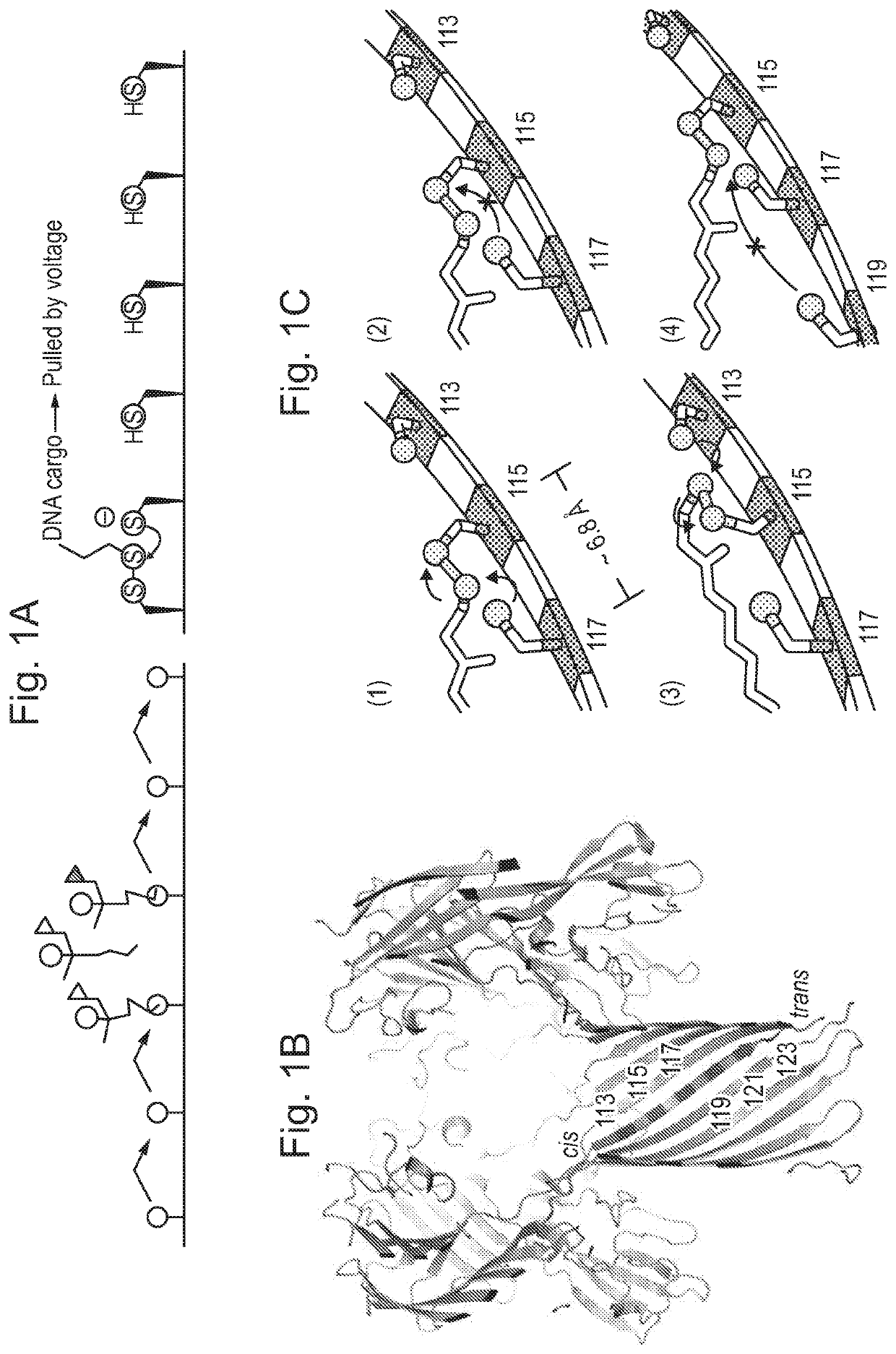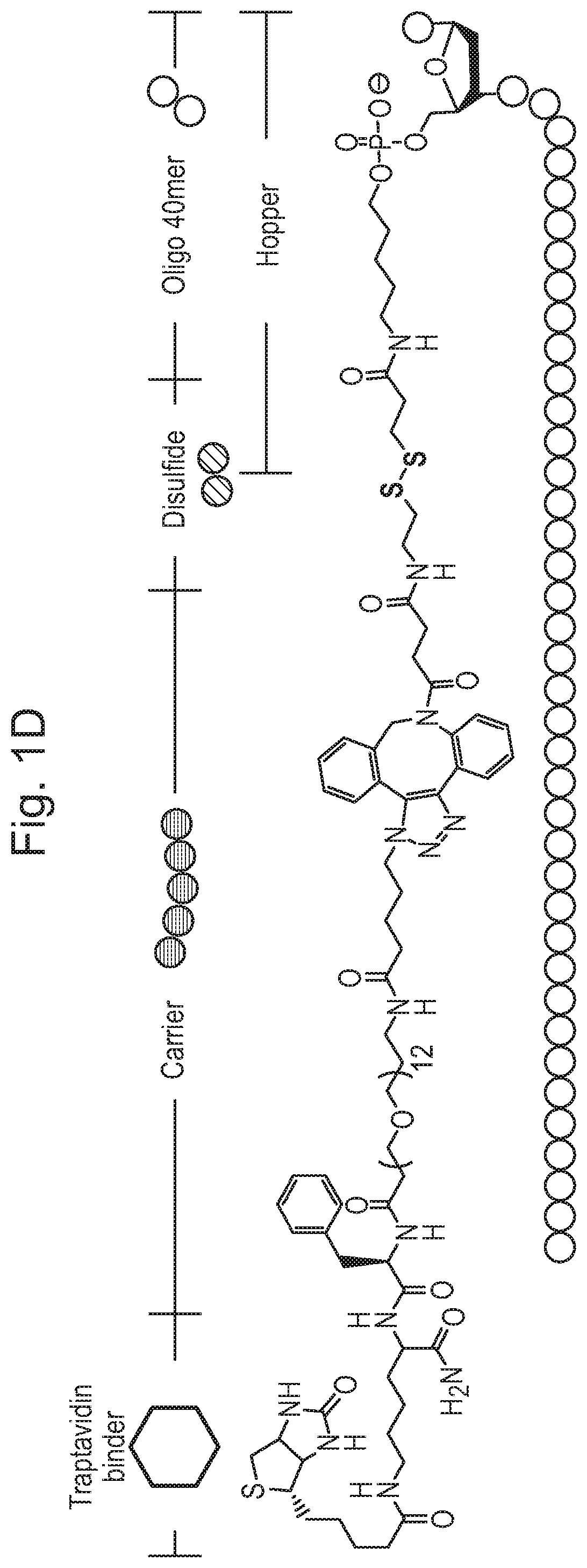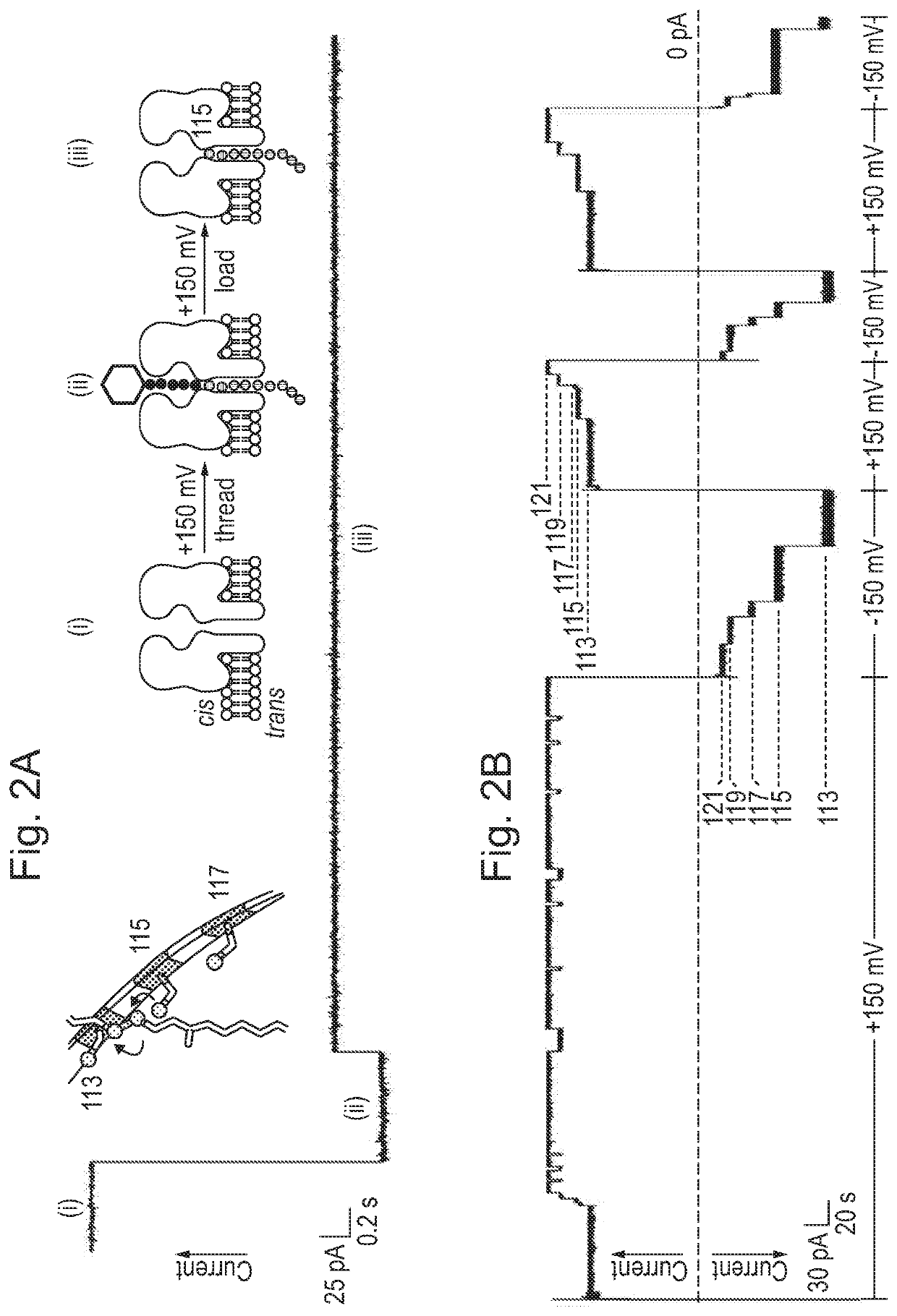Molecular hopper
a technology of molecular hoppers and hoppers, applied in the field of molecular hoppers, can solve the problems of complex systems and are typically not readily susceptible to application, and achieve the effect of improving processivity and autonomous movemen
- Summary
- Abstract
- Description
- Claims
- Application Information
AI Technical Summary
Benefits of technology
Problems solved by technology
Method used
Image
Examples
example 1
[0310]This Example demonstrates that a molecular hopper controlled by a chemical ratchet can move along a track processively and change direction on command. Key details are set out below and further information is provided under the heading “Supplementary Material” (SM) immediately following the main text of the Example.
[0311]Intrigued by technological potential, scientists have long attempted to control molecular motion. This Example describes how the individual 0.7-nm steps of a single molecular hopper can be monitored as it moves in an electric field along a track in a nanopore controlled by a chemical ratchet. The hopper demonstrates characteristics desired in a moving molecule: defined start- and end-points, processivity, fuel autonomy, directional motion and external control. The hopper is readily functionalized to carry cargos. For example, DNA can be ratcheted along the track in either direction, a prerequisite for nanopore sequencing.
[0312]Processivity lies at the heart of...
example 2
Supplementary Information for Example 2
1. Identifying the Covalent Adducts by Current Patterns
[0499]To confirm the identity of adducts formed upon thiol-disulfide interchange, we probed their behaviour in response to voltage steps (FIG. 22).
[0500]For an αHL-oligo adduct (FIG. 22a), the negative charges on the oligonucleotide within the barrel re-orientated the chain upon switching the applied potential between high positive and negative values (e.g. ±150 mV). At low potentials (e.g. +50 mV), the pulling force was insufficient to overcome the energy barrier for re-orientation. Therefore, due to condensation of the oligonucleotide, the current level recorded at a low potential (e.g. +50 mV) was lower if the immediately previous applied potential was of opposite polarity.
[0501]For an αHL-peptide adduct (FIG. 22b), the peptide fragment was locked inside the upper vestibule of the αHL pore with traptavidin acting as a stopper. In this case, the current pattern at a low applied potential ...
PUM
| Property | Measurement | Unit |
|---|---|---|
| pH | aaaaa | aaaaa |
| voltage | aaaaa | aaaaa |
| mass | aaaaa | aaaaa |
Abstract
Description
Claims
Application Information
 Login to View More
Login to View More - R&D
- Intellectual Property
- Life Sciences
- Materials
- Tech Scout
- Unparalleled Data Quality
- Higher Quality Content
- 60% Fewer Hallucinations
Browse by: Latest US Patents, China's latest patents, Technical Efficacy Thesaurus, Application Domain, Technology Topic, Popular Technical Reports.
© 2025 PatSnap. All rights reserved.Legal|Privacy policy|Modern Slavery Act Transparency Statement|Sitemap|About US| Contact US: help@patsnap.com



